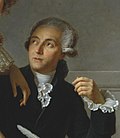| The Mystery of Matter | |
|---|---|
 DVD cover | |
| Genre | Documentary film |
| Created by | Stephen Lyons |
| Written by | Stephen Lyons |
| Directed by | Stephen Lyons; Muffie Meyer |
| Narrated by | Michael Emerson |
| Theme music composer | Tom Phillips |
| Country of origin | United States |
| Original language | English |
| No. of episodes | Three one-hour episodes |
| Production | |
| Producers | Stephen Lyons; Moreno/Lyons Productions LLC; Oregon Public Broadcasting |
| Cinematography | Gary Henoch |
| Editor | Raoul Rosenberg |
| Running time | 3 h (180 min) |
| Original release | |
| Network | PBS |
| Release | October 20, 2014 |
The Mystery of Matter: Search for the Elements is a 2014 American documentary miniseries, [1] [2] [3] which premiered nationwide on August 19, 2015. [4] [5] [6] The PBS documentary, in three-episodes of one hour each, was directed by Stephen Lyons and Muffie Meyer.
Contents
- Episodes
- Participants
- Gallery
- The seven featured scientists
- Cast and advisors
- Reviews and criticism
- See also
- References
- External links
The series, which took ten years to make, [7] describes the search for the basic chemical elements that form matter by focusing on the lives and times of seven scientific visionaries. [4] [5] Hosted by actor Michael Emerson, the series depicts the creative process of the scientists, with actors describing the process of discovery in the scientists' own words and reenacting their major discoveries using replicas of their original laboratory equipment. [4]










